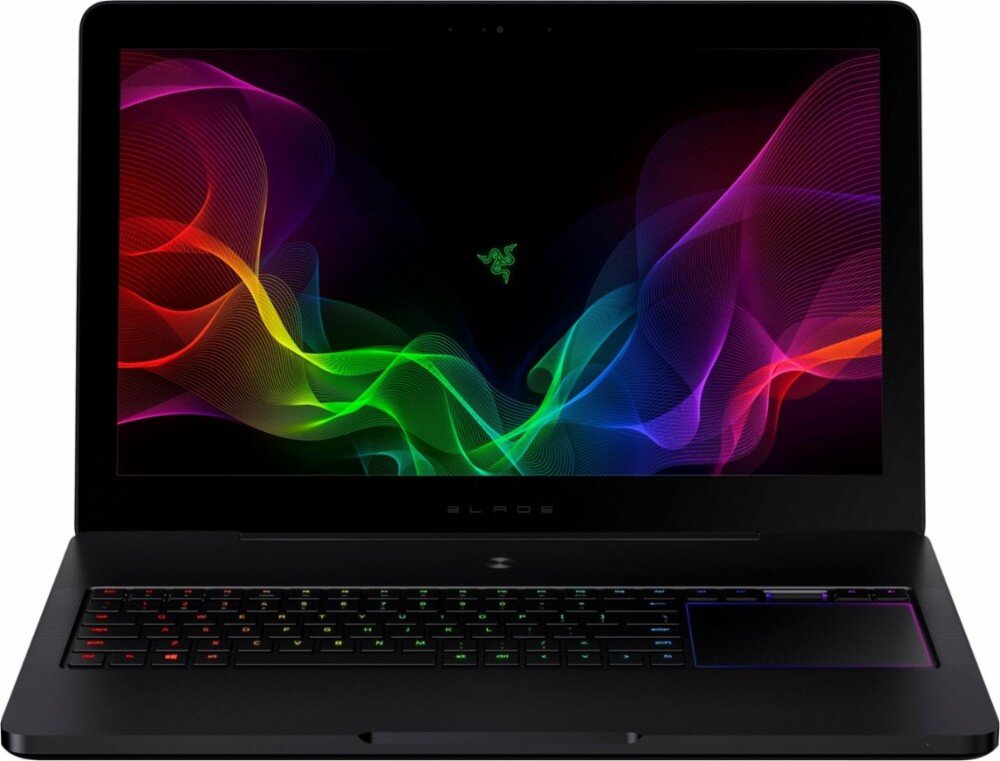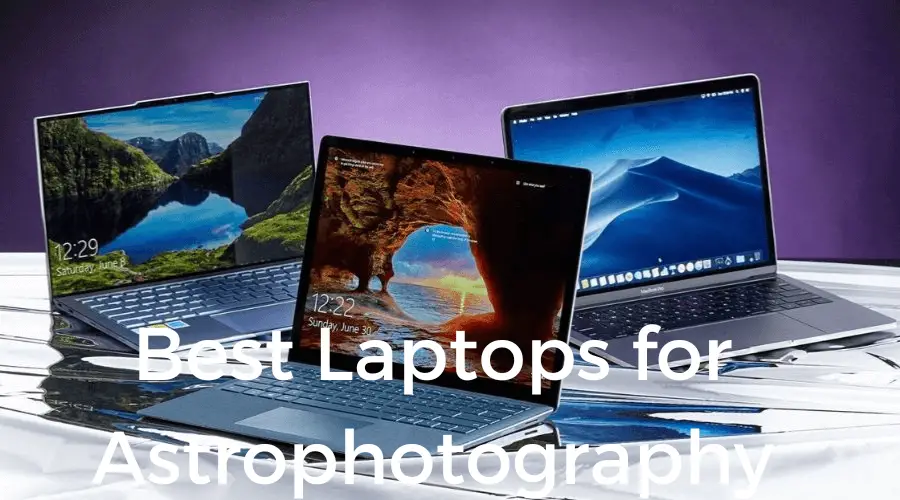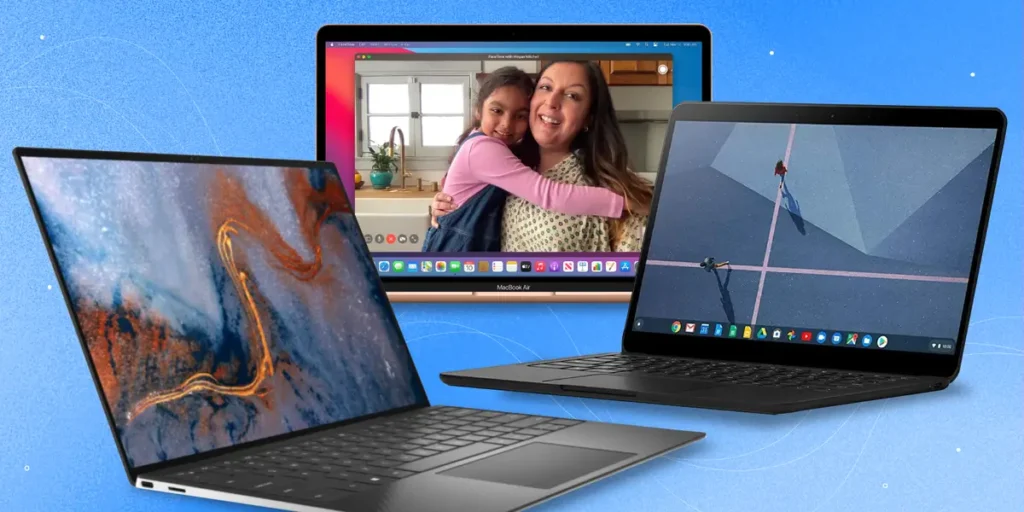Introduction
- Briefly introduce astrophotography and its growing popularity.
- Explain the importance of having a good laptop for astrophotography.
- Preview the main topics to be covered in the article.
Astrophotography is a specialised form of photography that involves capturing images of celestial objects such as stars, planets, galaxies, and nebulae. With the increasing availability of high-quality digital cameras and other imaging equipment, astrophotography has become more popular than ever. Amateur astrophotographers all over the world are using their skills and equipment to capture stunning images of the night sky.
Having a good laptop is essential for astrophotography because it allows photographers to process and edit their images. Astrophotography involves capturing large files in RAW format, which can be several megabytes in size. These files require powerful software and hardware to process and edit, which is why a good laptop is so important. Laptops with high-end processors and dedicated graphics cards can handle the heavy processing required for astrophotography, allowing photographers to edit and enhance their images to their desired level of detail.
In this article, we will discuss the importance of having a Best Laptops for Astrophotography and explore the key features to look for when choosing a laptop for this purpose. We will also provide some recommendations for laptops that are ideal for astrophotography. Additionally, we will provide tips for optimizing your laptop’s performance for astrophotography, as well as some software recommendations for processing and editing astrophotography images. Finally, we will discuss some other considerations, such as portability and battery life, that are important for astrophotographers who need to take their laptops into the field.
Minimum System Requirements for Astrophotography
- Discuss the minimum system requirements for a laptop to handle astrophotography software.
- Explain the importance of having a good graphics card and a fast processor for astrophotography.
- Mention the importance of having sufficient storage and RAM for astrophotography software.
- Give examples of laptops that meet these requirements.
Astrophotography involves capturing high-resolution images of celestial objects and processing them using specialized software. This requires a powerful laptop with certain minimum system requirements. In this section, we will discuss the minimum system requirements for a laptop to handle astrophotography software.
Firstly, it is important to have a good graphics card for astrophotography. This is because astrophotography software uses complex algorithms to process and edit images. A dedicated graphics card can help speed up this process by offloading some of the computational load from the CPU. The graphics card should have at least 2 GB of VRAM to handle the large files that are typical in astrophotography.
Secondly, a fast processor is essential for astrophotography. The processor should have a clock speed of at least 2.5 GHz and multiple cores to handle the complex computations involved in processing astrophotography images. The processor should also support hyper-threading, which allows multiple threads to be executed simultaneously, further increasing the processing power.
In addition to a good graphics card and fast processor, sufficient storage and RAM are also important for astrophotography software. The laptop should have at least 16 GB of RAM to handle the large files and complex processing involved in astrophotography. The storage should be at least 512 GB, with a fast solid-state drive (SSD) to ensure quick access to files.
Some laptops that meet these requirements include the Dell XPS 15, HP Spectre x360, and ASUS ROG Zephyrus G14. These laptops have dedicated graphics cards, fast processors, and sufficient RAM and storage to handle astrophotography software. They also have high-quality displays that are essential for accurate image editing.
In conclusion, a good laptop for astrophotography should have a dedicated graphics card, a fast processor with multiple cores, sufficient RAM, and storage. These system requirements are essential for processing and editing high-resolution astrophotography images. With the right laptop, astrophotographers can optimize their workflow and create stunning images of the night sky.
Some laptops that meet these requirements include the Dell XPS 15, HP Spectre x360, and ASUS ROG Zephyrus G14. These laptops have dedicated graphics cards, fast processors, and sufficient RAM and storage to handle astrophotography software. They also have high-quality displays that are essential for accurate image editing.
In conclusion, a good laptop for astrophotography should have a dedicated graphics card, a fast processor with multiple cores, sufficient RAM, and storage. These system requirements are essential for processing and editing high-resolution astrophotography images. With the right laptop, astrophotographers can optimize their workflow and create stunning images of the night sky.
The Best Laptops for Astrophotography
Category 1: Entry-Level Laptops
- Discuss entry-level laptops that can handle astrophotography software.
- Explain their features and benefits.
- Give examples of entry-level laptops that are good for astrophotography.
Category 1: Entry-Level Laptops
Entry-level laptops are a good choice for beginners or amateur astrophotographers who are looking for a laptop that can handle basic astrophotography software. These laptops are more affordable than high-end laptops, but they still have the necessary features to handle astrophotography tasks. In this section, we will discuss some entry-level laptops that are good for astrophotography.
- Acer Aspire 5

The Acer Aspire 5 is a budget-friendly laptop that has a 15.6-inch display and an AMD Ryzen 3 3200U processor. It also has 4GB of RAM and a 128GB SSD, which is not sufficient for large astrophotography files, but can be upgraded to meet the requirements. The laptop comes with a built-in AMD Radeon Vega 3 graphics card, which is suitable for basic astrophotography software. The Aspire 5 is a lightweight laptop, which makes it ideal for astrophotographers who need to take their laptop into the field.
- Lenovo IdeaPad 3
The Lenovo IdeaPad 3 is another budget-friendly laptop that has a 14-inch display and an AMD Ryzen 3 3250U processor. It also has 8GB of RAM and a 256GB SSD, which provides enough storage for astrophotography files. The laptop has an integrated AMD Radeon Graphics card, which is good enough for basic astrophotography software. The IdeaPad 3 is a lightweight and portable laptop, which makes it a good option for astrophotographers who need to travel with their laptop.
- HP Pavilion 15
The HP Pavilion 15 is a mid-range laptop that has a 15.6-inch display and an Intel Core i5-1035G1 processor. It also has 8GB of RAM and a 256GB SSD, which provides sufficient storage for astrophotography files. The laptop has an integrated Intel UHD Graphics card, which is suitable for basic astrophotography software. The Pavilion 15 has a backlit keyboard and a numeric keypad, which can be useful for data entry in astrophotography software.
In conclusion, entry-level laptops are a good choice for beginner or amateur astrophotographers who are looking for an affordable laptop that can handle basic astrophotography tasks. The Acer Aspire 5, Lenovo IdeaPad 3, and HP Pavilion 15 are all good options for astrophotography. While they may not have the most advanced features or the fastest processors, they are still capable of handling basic astrophotography software and tasks.
Category 2: Mid-Range Laptops
- Discuss mid-range laptops that can handle astrophotography software.
- Explain their features and benefits.
- Give examples of mid-range laptops that are good for astrophotography.
Category 2: Mid-Range Laptops
Mid-range laptops are a step up from entry-level laptops, offering better performance and more advanced features. These laptops are suitable for astrophotographers who need a laptop that can handle more advanced astrophotography software and tasks. In this section, we will discuss some mid-range laptops that are good for astrophotography.
- Dell XPS 15

The Dell XPS 15 is a high-performance laptop that has a 15.6-inch display and an Intel Core i7-10750H processor. It also has 16GB of RAM and a 512GB SSD, which provides plenty of storage for astrophotography files. The laptop has an NVIDIA GeForce GTX 1650 Ti graphics card, which is suitable for advanced astrophotography software. The XPS 15 has a sleek and stylish design, making it a great choice for astrophotographers who want a laptop that looks as good as it performs.
- Lenovo ThinkPad P14s
The Lenovo ThinkPad P14s is a durable and reliable laptop that has a 14-inch display and an Intel Core i7-10510U processor. It also has 16GB of RAM and a 512GB SSD, which provides sufficient storage for astrophotography files. The laptop has an AMD Radeon Pro 5200M graphics card, which is suitable for advanced astrophotography software. The ThinkPad P14s has a robust design and a long battery life, making it a great choice for astrophotographers who need a laptop that can withstand heavy use.
- ASUS ZenBook Pro Duo UX581
The ASUS ZenBook Pro Duo UX581 is a unique laptop that has a 15.6-inch main display and a secondary 14-inch touchscreen display above the keyboard. The laptop has an Intel Core i7-9750H processor, 16GB of RAM, and a 1TB SSD, which provides plenty of storage for astrophotography files. The laptop has an NVIDIA GeForce RTX 2060 graphics card, which is suitable for advanced astrophotography software. The ZenBook Pro Duo UX581 has a futuristic design and a powerful performance, making it a great choice for astrophotographers who want a laptop that stands out from the crowd.
In conclusion, mid-range laptops offer better performance and more advanced features than entry-level laptops, making them a great choice for astrophotographers who need a laptop that can handle more advanced astrophotography software and tasks. The Dell XPS 15, Lenovo ThinkPad P14s, and ASUS ZenBook Pro Duo UX581 are all good options for astrophotography. While they may be more expensive than entry-level laptops, they offer a significant performance boost and more advanced features that are worth the investment for serious astrophotographers.
Category 3: High-End Laptops
- Discuss high-end laptops that can handle astrophotography software.
- Explain their features and benefits.
- Give examples of high-end laptops that are good for astrophotography.
Category 3: High-End Laptops
High-end laptops are designed for professionals who need the best performance and the most advanced features. These laptops are suitable for astrophotographers who need a laptop that can handle the most demanding astrophotography software and tasks. In this section, we will discuss some high-end laptops that are good for astrophotography.
- Apple MacBook Pro 16
The Apple MacBook Pro 16 is a high-end laptop that has a 16-inch display and an Intel Core i9 processor. It also has 16GB of RAM and a 1TB SSD, which provides ample storage for astrophotography files. The laptop has an AMD Radeon Pro 5500M graphics card, which is suitable for the most demanding astrophotography software. The MacBook Pro 16 has a sleek and elegant design, making it a great choice for astrophotographers who need a powerful and stylish laptop.
- Razer Blade Pro 17

The Razer Blade Pro 17 is a high-performance laptop that has a 17.3-inch display and an Intel Core i7-10875H processor. It also has 16GB of RAM and a 512GB SSD, which provides plenty of storage for astrophotography files. The laptop has an NVIDIA GeForce RTX 3080 graphics card, which is suitable for the most demanding astrophotography software. The Blade Pro 17 has a sleek and slim design, making it a great choice for astrophotographers who need a powerful and portable laptop.
- MSI GS75 Stealth
The MSI GS75 Stealth is a powerful gaming laptop that is also suitable for astrophotography. It has a 17.3-inch display and an Intel Core i9-10980HK processor. It also has 32GB of RAM and a 1TB SSD, which provides plenty of storage for astrophotography files. The laptop has an NVIDIA GeForce RTX 2080 graphics card, which is suitable for the most demanding astrophotography software. The GS75 Stealth has a slim and lightweight design, making it a great choice for astrophotographers who need a powerful and portable laptop.
In conclusion, high-end laptops offer the best performance and the most advanced features for astrophotography. The Apple MacBook Pro 16, Razer Blade Pro 17, and MSI GS75 Stealth are all excellent options for astrophotography. While they may be more expensive than mid-range and entry-level laptops, they offer the best performance and the most advanced features that are essential for serious astrophotographers.
POST YOU MAY LIKE:
5 Cheapest Laptop For Cricut Design Space In 2023
5 Best Gaming Laptop For Warzone In 2023
15 Best Cheap Laptop For Music Production In 2023
Additional Considerations for Astrophotography Laptops
- Discuss additional considerations for astrophotography laptops, such as screen resolution and color accuracy.
- Explain the importance of having a good display for astrophotography.
- Mention other features that can be useful for astrophotography, such as a touchscreen or a 2-in-1 form factor.
- Give examples of laptops that excel in these additional areas.
Additional Considerations for Astrophotography Laptops
While the minimum system requirements and the performance of the laptop are crucial factors to consider when choosing a laptop for astrophotography, there are other considerations that should not be overlooked. In this section, we will discuss some additional considerations for astrophotography laptops.
- Screen Resolution and Color Accuracy
Having a good display is essential for astrophotography, as it enables you to see your images accurately and in great detail. A high-resolution display with excellent color accuracy will allow you to see the fine details and subtle color variations in your astrophotography images. Therefore, it is recommended to look for a laptop with at least a 1080p resolution, with an IPS panel for good viewing angles and color accuracy.
- Touchscreen and 2-in-1 Form Factor
A touchscreen and 2-in-1 form factor can be useful for astrophotography, especially for those who like to work on the go. A touchscreen can allow you to easily zoom in and navigate through your images, while a 2-in-1 form factor can provide the flexibility to use the laptop as a tablet, making it easier to view and edit images on the go. However, these features are not essential for astrophotography, and it ultimately comes down to personal preference.
- Other Features
Other features that can be useful for astrophotography include a good keyboard and trackpad, as well as a wide range of ports for connecting external devices, such as cameras and hard drives. Additionally, having a long battery life can be useful for astrophotographers who like to work on location.
Some laptops that excel in these additional areas include the Dell XPS 13, which has a 13.3-inch 1080p touchscreen display and excellent color accuracy, and the HP Spectre x360, which has a 15.6-inch 4K touchscreen display and a 2-in-1 form factor. The Lenovo ThinkPad X1 Carbon is also a great option for astrophotographers, with a 14-inch 1080p display, an excellent keyboard and trackpad, and a wide range of ports.
In conclusion, while the minimum system requirements and the performance of the laptop are essential for astrophotography, there are other considerations to keep in mind, such as screen resolution and color accuracy, as well as additional features like a touchscreen and 2-in-1 form factor. It is important to choose a laptop that meets your specific needs and preferences as an astrophotographer.
Frequently Asked Questions
- Use vector representation technique to find semantically similar FAQs to include in this section.
- Answer common questions about astrophotography laptops, such as:
- What software do I need for astrophotography?
- Can I use a gaming laptop for astrophotography?
- How much storage do I need for astrophotography?
- Can I use an external monitor with my laptop for astrophotography?
- Can I use a Mac for astrophotography?
As an astrophotographer, choosing the right laptop can be a crucial factor in achieving high-quality images. Here are some frequently asked questions about astrophotography laptops:
Q: What software do I need for astrophotography?
A: There are several software programs available for astrophotography, including DeepSkyStacker, Registax, and PixInsight, among others. The software you need may depend on your specific type of astrophotography and your preferences, so it’s essential to research and choose the software that works best for you.
Q: Can I use a gaming laptop for astrophotography?
A: Yes, you can use a gaming laptop for astrophotography, as long as it meets the minimum system requirements for the software you plan to use. Gaming laptops typically have a fast processor, a good graphics card, and sufficient RAM, which are all essential for astrophotography.
Q: How much storage do I need for astrophotography?
A: The amount of storage you need for astrophotography will depend on the size of your images and how much you plan to store on your laptop. For example, if you plan to store a large number of high-resolution images, you may need a laptop with a larger storage capacity, such as 1TB or more. However, you can also use external hard drives or cloud storage to store your images, which can help to save space on your laptop.
Q: Can I use an external monitor with my laptop for astrophotography?
A: Yes, you can use an external monitor with your laptop for astrophotography. This can be useful for viewing your images on a larger screen or for working with multiple images at once. Most laptops have a range of ports, including HDMI or DisplayPort, which can be used to connect to an external monitor.
Q: Can I use a Mac for astrophotography?
A: Yes, you can use a Mac for astrophotography. While Windows-based laptops are more common for astrophotography, there are several software programs available for Mac, including DeepSkyStacker, Starry Landscape Stacker, and Nebulosity, among others. However, it is important to check the system requirements for the software you plan to use and ensure that your Mac meets those requirements.
In conclusion, when it comes to choosing a laptop for astrophotography, it’s important to consider your specific needs and preferences, as well as the system requirements for the software you plan to use. With the right laptop and software, you can achieve stunning images of the night sky and take your astrophotography to the next level.
Conclusion
- Summarize the main points of the article.
- Provide final recommendations for readers looking to buy a laptop for astrophotography.
Conclusion
In this article, we have discussed the essential features and requirements for a laptop suitable for astrophotography. We have also covered entry-level, mid-range, and high-end laptops that are well suited for astrophotography, as well as additional considerations such as screen resolution, color accuracy, and other features that can be useful for astrophotography. Furthermore, we have answered common questions about astrophotography laptops, such as the required software, storage, external monitors, and the possibility of using a Mac for astrophotography.
When it comes to purchasing a laptop for astrophotography, it’s essential to consider the features and specifications that are most important for your specific needs. Entry-level laptops are an excellent choice for beginners or those on a tight budget, while mid-range laptops offer a good balance of performance and affordability. High-end laptops, on the other hand, provide top-of-the-line performance and the best features for professional-level astrophotography.
It’s also important to consider additional features such as display quality, resolution, and color accuracy, as well as other useful features like a touchscreen or a 2-in-1 form factor. When it comes to software, choosing the right program that suits your needs is also crucial for achieving high-quality astrophotography results.
In conclusion, choosing the right laptop for astrophotography can significantly impact the quality of your images. We recommend that you assess your needs and preferences, research the minimum system requirements for the software you plan to use, and invest in a laptop that offers the features and specifications that match your specific needs. With the right laptop and software, you can capture breathtaking images of the night sky and take your astrophotography skills to the next level.


